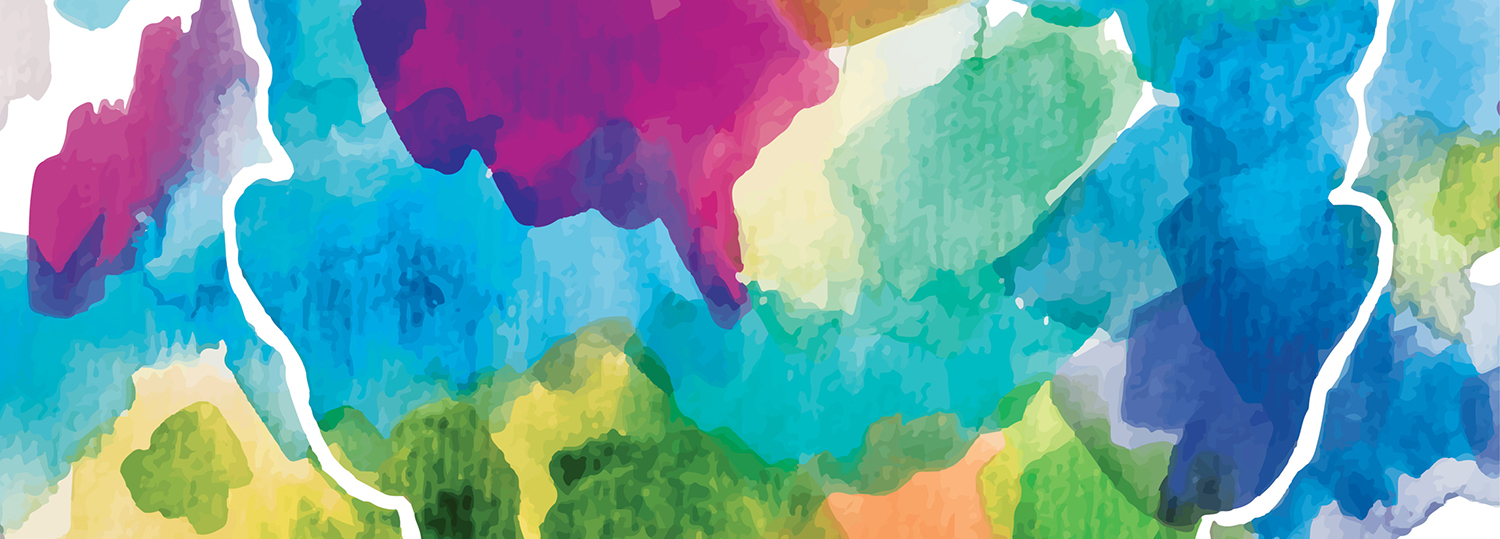
Teresa Bennett, a fourth-year Health Sciences student, says she has by and large felt welcome and supported at Laurier. There have been times when she’s felt singled out as the only Black person in a class or club but, until recently, she says she had never experienced blatant racism.
Bennett was working in a placement and a colleague asked for her opinion, so she offered advice. When that advice didn’t turn out as her colleague hoped, the person turned on her, calling her “Aunt Jemima”– a brand known for perpetuating a racist stereotype that dates to the days of slavery– and a witch.
“I was so shaken. I tried to collect myself. I didn’t retaliate,” Bennett says of the incident. “For someone to say that to me, they can’t know what those words mean and their history.”
Even months later, when Bennett talks about the experience, she says the pain and stress return.
━
In post-secondary institutions across Canada, racism can take the form of name-calling, stereotyping, vandalism and even violence. But discrimination can also be covert and insidious. It has been built into the system over decades and does lasting harm to students’ mental health, academic performance and futures.
For Black and Indigenous students, systemic discrimination might mean not being able to find a faculty or staff mentor or role model who understands their culture, history, perspective and experience; course content that focuses on the history and knowledge of white Europeans; getting called upon in class to speak on behalf of their race or culture; or never being spoken to at all. Staff and faculty might not know how to report an incident of racism when a student shares their experiences. Campus counsellors might not know how best to support students who’ve experienced discrimination.
These are challenges Laurier is working to address.
Most post-secondary institutions in Canada have not collected race-based data about students, which contributes to the challenge of understanding and addressing these issues. Change has been slow, and groups across Canada led by students of colour have been leading the charge, bringing to light the first-hand experiences of racialized students and demanding change.
In studies and reports produced across the country, students have asked for better reporting systems for incidents of racism; more racialized faculty and staff, especially counsellors; mandatory anti-oppression and decolonization education for faculty and staff; more funding and resources for Indigenous student services and equity and diversity offices; and a greater diversity of voices and histories in course content.
One such report is the Being Raced report, which has helped inform Laurier’s ongoing work in the areas of equity, diversity and inclusion (EDI). This important work was presented to university leaders by authors Paige Grant, Azka Choudhary, Joey Lee, Kate Harvey, Lauren Burrows, Laura Mae Lindo and Vanessa Oliver in the spring of 2019.
━
Recently, many of these longstanding issues began to receive the attention they deserve. During the summer of 2020, millions took to the streets in the United States, Canada and around the world to protest anti-Black racism and police brutality. The protests were sparked by the death of George Floyd, who died while being arrested by police in Minneapolis, Minnesota over an allegedly counterfeit $20 bill. After handcuffing Floyd, a police officer pinned him to the ground and knelt on his neck for nearly nine minutes.
Lamine Diallo, an associate professor in Laurier’s Leadership program and the first racialized faculty member hired at Laurier’s Brantford campus after it was established in 1999, says the protests were the first time he’s seen an equal number of non-racialized and Black people protesting racism and police brutality together.
“Young people joined the movement to demand an end to police brutality against Blacks because they saw something that was really out of line,” says Diallo. “It doesn’t matter the colour of your skin, you just have to be a human to understand that it was wrong.

Lamine Diallo
Associate professor, Laurier’s Leadership program
“People want to see change. If we can take advantage of this historical moment, we can build a society that is much more inclusive.”
The protests resonated on Laurier’s campuses, where there was a collective desire to strengthen existing measures aimed at addressing systemic barriers. Laurier already had some initiatives in place, and the protests added an increased sense of priority and propelled the university to broaden the scope of its equity, diversity, inclusion and Indigeneity goals. Members of the community expressed their desire for more than incremental change.
In May 2019, Laurier was one of 17 academic institutions to be granted funding through the federal government’s Dimensions: Equity, Diversity and Inclusion Canada program, aimed at identifying and eliminating systemic barriers impeding the recruitment, retention and advancement of underrepresented groups within academia, including women, Indigenous peoples, people with disabilities, racialized people and members of the 2SLGBTQ+ community.
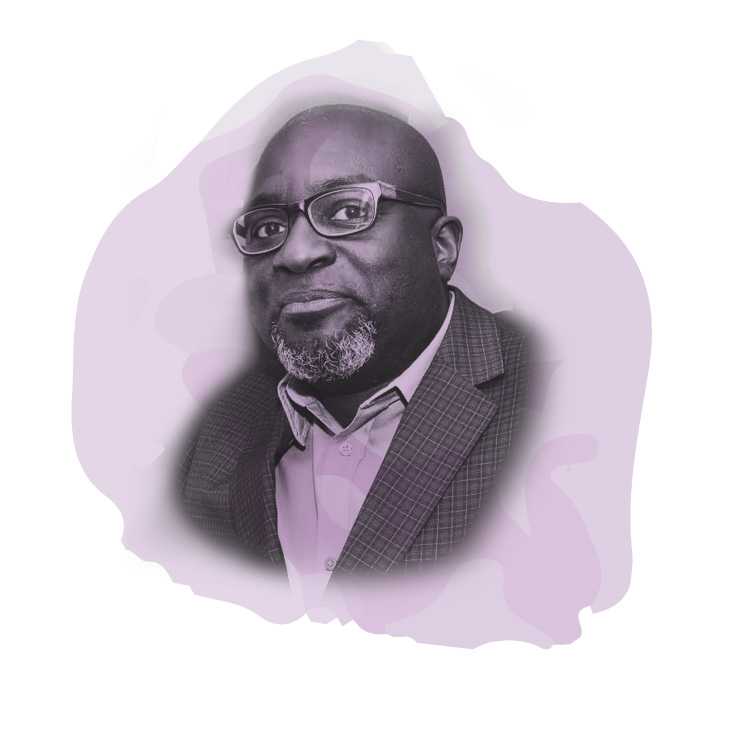
Barrington Walker
Associate vice-president: equity, diversity and inclusion
The university was also among the first post-secondary institutions to sign a charter, through the Dimensions program, committing to equity, diversity and inclusion across disciplines and implementing measures to address systemic barriers.
With funding from the Dimensions program, Laurier hired Barrington Walker as associate vice-president: equity, diversity and inclusion to lead EDI initiatives; two EDI faculty colleagues to provide support and resources to members of the Laurier community; and a research associate to collect data that will inform the university’s action plan.
“Laurier is at the centre of emerging conversations about equity, diversity and inclusion,” says Walker. “We were one of the first institutions to make a public commitment. Laurier’s leaders have shown the vision and courage needed to work through contentious issues during a difficult time.”
━
In an effort to realize and hold the university accountable to its EDI and Indigeneity goals, Laurier launched its Action Plan for Equity, Diversity, Inclusion and Indigeneity in June 2020.
The plan outlines institution-wide strategies and initiatives informed by research and community consultation, and it will be continuously updated and revised as data and feedback are gathered. To ensure progress and transparency, the plan outlines who is accountable for each initiative, the timeline, and the current status. Some of the goals identified in Laurier’s action plan include:
Laurier is also working to create two strategic plans: one for equity, diversity and inclusion and one for Indigeneity. The process of establishing the EDI Strategic Plan began this fall with the creation of a steering committee. The Indigeneity Strategic Plan will be developed when a new associate vice-president of Indigenous Initiatives joins the university, with the hiring process currently underway.
Indigeneity and EDI go side by side in the action plan and in the strategic plans, but Indigeneity will not be absorbed into the EDI plan. Instead, in the spirit of the Two Row Wampum – an agreement of peace, co-existence and mutual respect struck between the Haudenosaunee Confederacy and European settlers – they will travel in partnership down the same path in pursuit of an inclusive, welcoming and just community.
The action and strategic plans focus on the experiences of Black, Indigenous and racialized students, faculty and staff in order to shine a light on the longstanding issues they have faced. The experiences of those from other marginalized communities who experience discrimination, and those with multiple and intersecting identities, will also be central to the work.
“We cannot afford to look at issues of discrimination as unidimensional,” says Eden Hennessey, manager of the Centre for Student Equity, Diversity and Inclusion. “We must understand that intersections of identity, such as disability, race, gender and sexuality are complex. The plans therefore need to reflect those complexities as well.”
To keep the community informed about the status of the action and strategic plans, Laurier hosted an information session in September. A roundtable discussion about the university’s EDI and Indigeneity goals was held earlier in the summer and was open to the community. Another public discussion, held in October, focused on the challenges of pursuing EDI goals at universities and included experts from universities across Canada. Further events designed to raise awareness about the action and strategic plans will be held during the coming year.
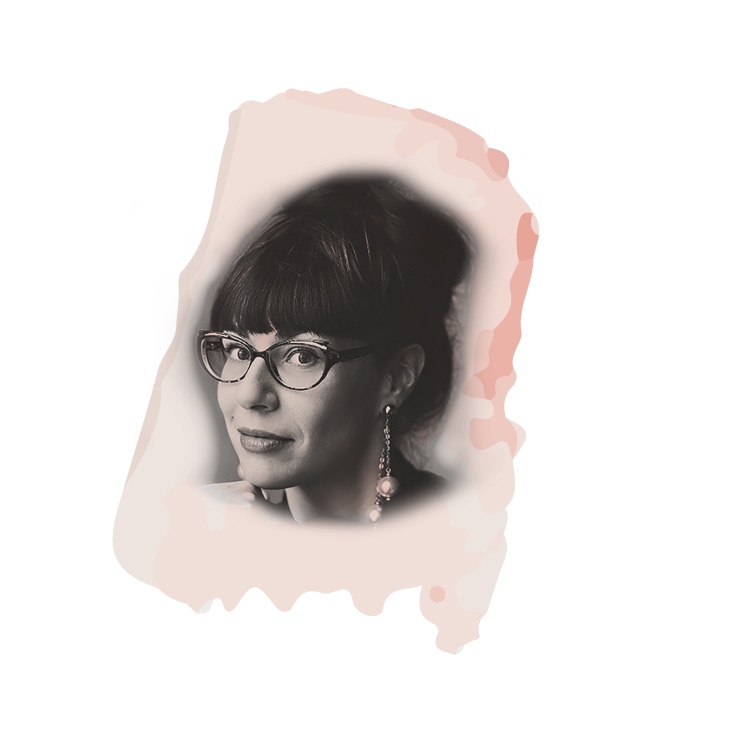
Eden Hennessey
Manager, Centre for Student Equity, Diversity and Inclusion
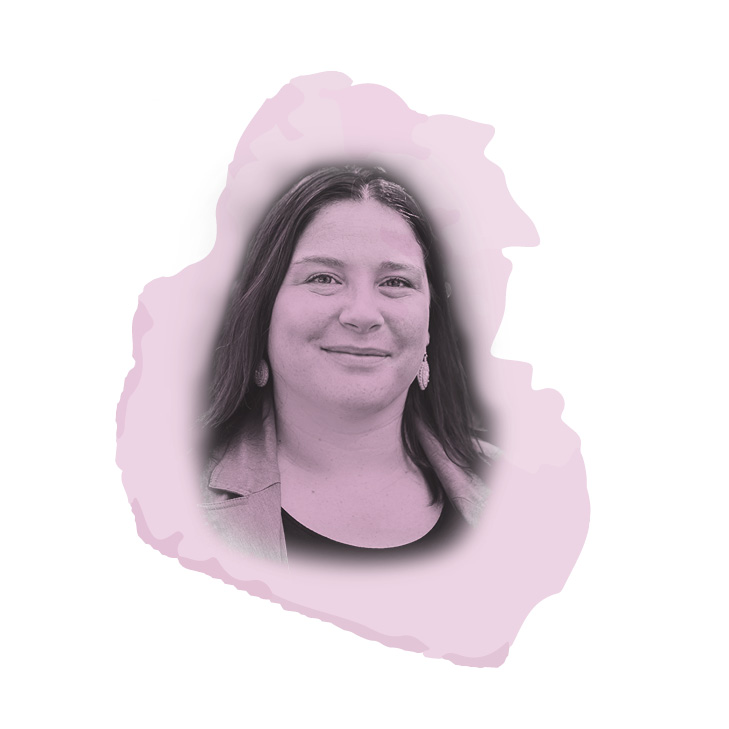
Melissa Ireland
Director and interim senior advisor, Indigenous Initiatives
“We have so much to offer here at Laurier,” says Melissa Ireland, director and interim senior advisor of Indigenous Initiatives. “If we put in the work to make this university as welcoming and inclusive as it can be, Laurier could be a destination for First Nations, Inuit and Métis learners, as well as for those who can bring their talent into faculty or staff positions.”
━
Despite her experience with racism, Bennett says she feels Laurier has made progress on equity and diversity issues, especially during the past year.
“Laurier is fostering spaces for Black students, they’re putting in the work and giving us a say in how we want things to look,” says Bennett, who serves as president of the Laurier chapter of Black Medical Leaders of Tomorrow. “Even though we don’t get it right all the time, there is an effort being made and that’s the first step in any change.”
Many students, including Bennett, have felt apprehensive about reporting incidents of racism. The problem is not unique to Laurier. A CBC News study found that many Canadian universities received no or very few complaints about racial discrimination between 2011 and 2015. Besides worrying about being stereotyped as angry or a trouble-maker, students have said they’re not convinced universities will take their concerns seriously, or that perpetrators will be held responsible.
Some of the more common experiences students report include micro-aggressions, such as jokes and stereotyping heard in the classroom, in residence, at off-campus parties or in the wider community. Students also share frustrations about ignorant or racist comments made by faculty and staff members, or courses that leave out the histories of Indigenous, Black and other racialized people.
Marcus Shirley, a third-year Criminology student and vice-president of the Black Student Collective at Laurier’s Brantford campus, has felt singled out as the only Black student in classes and at parties. He often notices people staring at him and some students seem nervous or uncomfortable around him.
“You feel that you’re being treated differently,” says Shirley. “It kind of makes you feel like you’re an alien, you know? That just because of your skin colour, you’re different somehow.”
Over the course of two years, Shirley has been asked to show his identification on campus four times, once returning to residence, twice for hanging posters for an event run by a student club, and another time as he was walking across campus.
Black and Indigenous students, including Shirley, have found friends and community in the Centre for Student Equity, Diversity and Inclusion, the university’s Indigenous student centres, and other student services including the Black Student Collective on the Brantford campus and the Association of Black Students in Waterloo. These are also places where students who have been impacted directly or indirectly by racism go when they need support or help working through how to respond.
“I see students who come in with clarity and purpose about what they want to see happen,” says Lauren Burrows, education and inclusion coordinator at the Centre for Student Equity, Diversity and Inclusion in Brantford. “They’re looking for change in the institution and they’re skilled in understanding and communicating what happened. But I also see students who come in confused. They don’t understand what happened. They ask, ‘Was this my fault?’”
Burrows says that, without support, discrimination can have far-reaching impacts on students’ lives. If racism happens in class, students might skip attending until they feel safe. If it happens in residence, they might move out. Sometimes, they just drop out of school altogether.
━
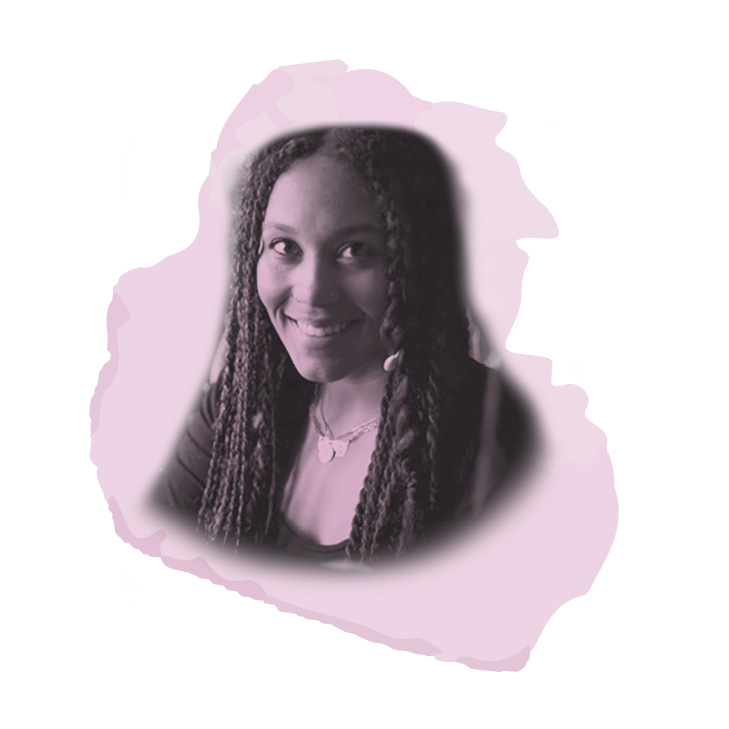
Lauren Burrows
Education and inclusion coordinator, Centre for Student Equity, Diversity and Inclusion, Brantford campus
Indigenous students face their own unique set of challenges at university. Some travel from remote communities to study at Laurier and have never lived in a city. They are often far from the support spaces and cultural resources to which they’re accustomed. They are also more likely to be mature students juggling childcare or other caretaking responsibilities.
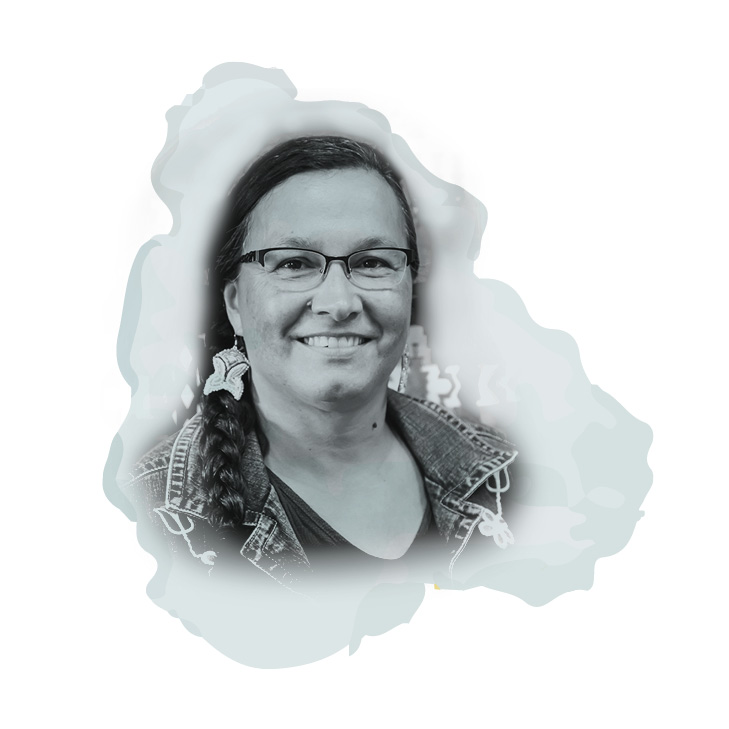
Kathy Absolon
Associate professor, director of Laurier’s Centre for Indigegogy
Kathy Absolon, an associate professor in the Indigenous Field of Study in the Faculty of Social Work, travelled from Flying Post First Nation, an Anishinaabe community in northern Ontario, to study at Laurier more than 30 years ago. Back then, there were no support services for Indigenous students. Since joining Laurier as a faculty member in 2007, Absolon has advocated for the creation of two Indigenous student centres and the university’s Centre for Indigegogy, which provides education and training grounded in Indigenous culture, traditions, knowledges and decolonization. She currently serves as the centre’s director.
Absolon says she has seen progress at Laurier when it comes to providing resources for Indigenous students, staff and faculty, but there is more to be done. She would like to see more funding and resources for Indigenous student centres; more space for ceremonies; more Indigenous staff and faculty; and training for non-Indigenous staff and faculty about the history of colonization in Canada, the legacy of residential schools and the child welfare system.
Indigeneity needs to be a central part of Laurier, says Absolon, not just an add-on.
“It’s not that Indigenous students don’t feel welcome,” she says. “They need to see reflections of their culture — and I don’t just mean teepees and feathers. They need to see accurate reflections of their identity, experiences, knowledge and nationhood built into the structures of the university.”
━
Discrimination at laurier – and other post-secondary institutions – is not new. Racialized students have been sharing their experiences and demanding action for decades. Some community members are encouraged by Laurier’s recent steps toward equity, diversity, inclusion and Indigeneity, but skeptical that the university will deliver on its promises.
“Students and faculty members have complained about racism and then nothing happened,” says Diallo, who is one of Laurier’s two EDI faculty colleagues. “They’ve learned to cope with discrimination. They get called names and they keep walking. If your prof says something discriminatory, you don’t challenge it.”
The challenge now, says Diallo, is to ensure a diverse range of voices is included in the equity, diversity, inclusion and Indigeneity process from beginning to end. And waiting for input to come isn’t enough.
“People are tired of fighting the same fight,” he says. “It’s up to the university now to reach out and make them part of the process.”
In her role, Hennessey sees how important it is to consult with students – and she sees consultation as key to Laurier making progress on equity, diversity, inclusion and Indigeneity. She notes that the university lacks diversity – especially among staff and faculty – and that addressing racism and discrimination must be a central part of university policy moving forward.
“Typically, if something isn’t part of your experience, it is not a priority,” says Hennessey. “We’re not asking students to lead the university in these initiatives, but their feedback is instrumental in the process.
“It takes strength to acknowledge the shortcomings of the past and to be receptive to feedback, positive and negative. To me, that’s what good leadership does. We have a lot of work to do, but I think we can have real impact. If we stay true to what we’ve set out to do, we might very well change Laurier forever.”
• Send your thoughts and comments to avpedi@wlu.ca and indigenous@wlu.ca.
• Visit wlu.ca/about/discover-laurier for more information and the latest updates.
• Watch your inbox and the events listing page on laurieralumni.ca to join in events and discussions focused on EDI and Indigeneity.
• Support EDI initiatives at Laurier. Visit give.wlu.ca/EDI.
• Support Indigenous Initiatives at Laurier. Visit give.wlu.ca/Indigenous.